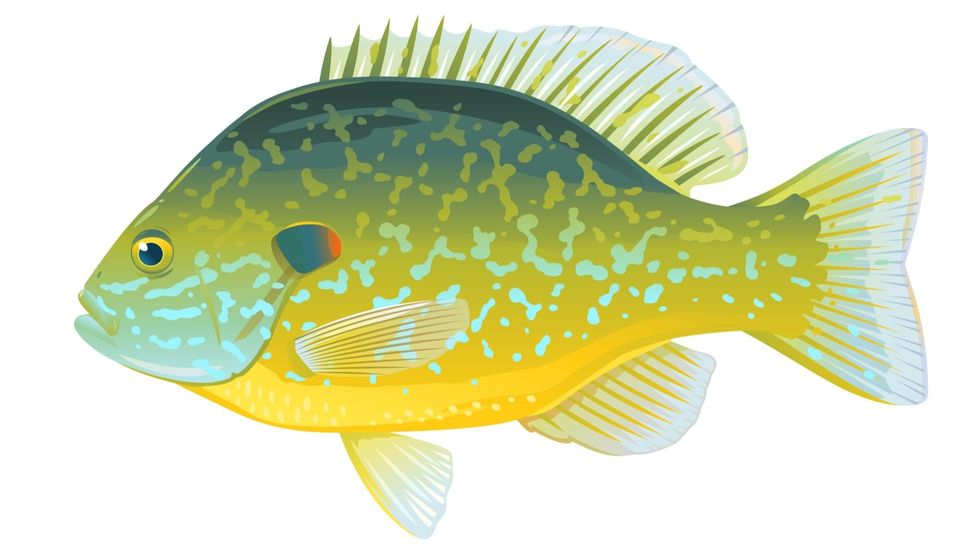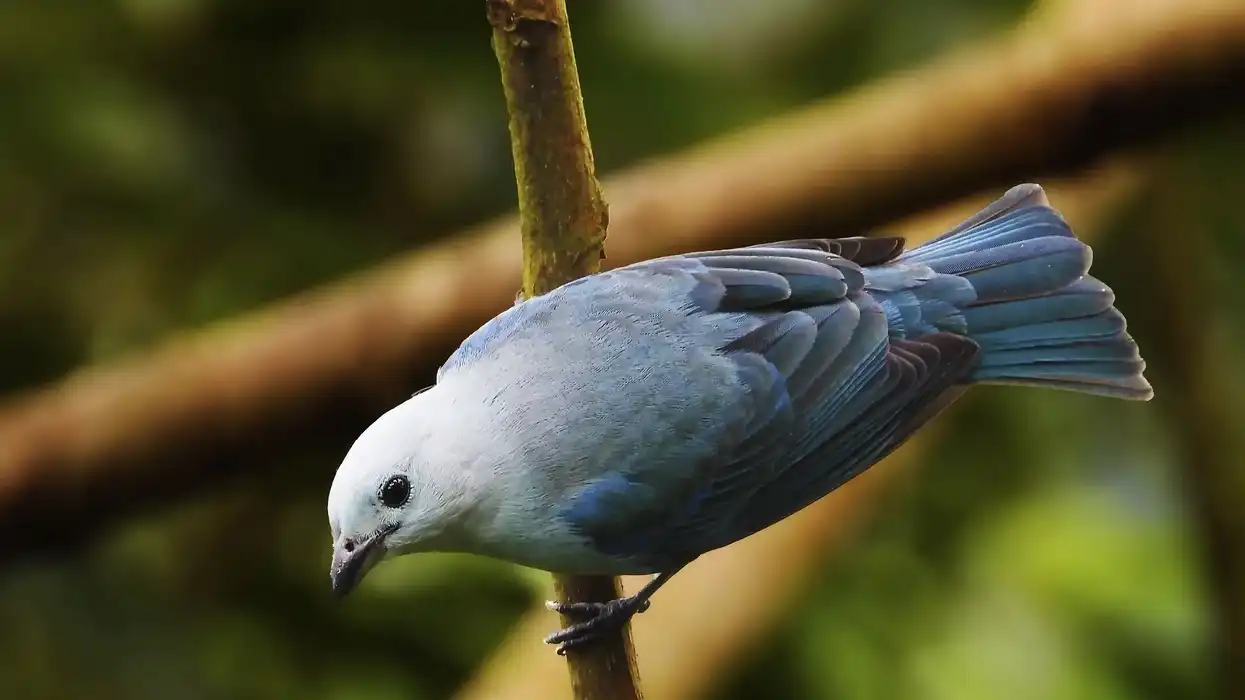The sunfish is a popular family of a large number of New World fish that are generally endemic to North America. The blue-spotted sunfish, also written as the bluespotted sunfish (Enneacanthus glorious), is one of the least famous but most colorful and attractive small sunfish.
Its distribution extends to the eastern and southern parts of the United States and the distribution of this species is almost native throughout its range. This freshwater fish also might end up in a home aquarium as they make wonderful pet fish.
They are difficult to differentiate from another member of the sunfish family called banded sunfish. In the aquatic world, hybridizing these two fishes is not rare.
Bluespotted sunfish have a wide distribution and their distribution is relatively easily found throughout their native range.
The most preferred habitats of the bluespotted sunfish species are freshwater ponds and lakes but they can also exist in sluggish and brackish aquatic bodies and don't forget that blue-spotted sunfish are loved as pet fish too. If you are interested in knowing the life, history, and nature of this fish, keep on reading these interesting facts.
For similar content check out these facts about spiny dogfish and catfish.
Blue-Spotted Sunfish Interesting Facts
What type of animal is a blue-spotted sunfish?
The bluespotted sunfish (Enneacanthus gloriosus) is a small freshwater or brackish water fish.
What class of animal does a blue-spotted sunfish belong to?
Blue-spotted sunfish belong to the class Actinopterygii, the common class for all bony and ray-finned fishes.
How many blue-spotted sunfish are there in the world?
The total number of adult bluespotted sunfishes is not known yet but their population is believed to cross 1,00,000 mature individuals. The bluespotted sunfish population seems to be stable at present without any major threat.
Where does a blue-spotted sunfish live?
Like all sunfish, bluespotted sunfish are found in North America. They are a native species of the coastal lowlands of North America that extend from the southern tip of New York to further south to the western borders of Florida.
In Florida, these fishes populate the peninsular drainages of western and north-central parts. In the north, the distribution of this aquatic freshwater fish ranges up to New Jersey and Pennsylvania.
Some common river basins and drainages where they naturally occur are the Yellow River, Suwannee River, Tampa Bay, minor Gulf tributaries, lower Mississippi, and the Escambia River. Part of its population has also been introduced in some freshwater lakes, such as Ontario Lake.
What is a blue-spotted sunfish's habitat?
The bluespotted sunfish stays in mud pools or backwaters containing lots of vegetation where underwater observation is relatively difficult. This makes gathering knowledge about the life history of these fish in their habitats quite difficult.
If these fishes are kept as pets, a blue-spotted sunfish aquarium must contain cold water for them to breed in and the aquarium environment should imitate the clear and slightly acidic water of this fish's natural habitat.
Who does blue-spotted sunfish live with?
The bluespotted sunfish turns aggressive and hostile if kept together in a tank with other species outside of the sunfish group. They prefer to stay only with their own species and with other sunfish.
How long does a blue-spotted sunfish live?
The bluespotted sunfish do not have a long lifespan. The northern species can reach a maximum of five years of age but fish in the south cannot even live that long.
How do they reproduce?
The bluespotted sunfish attains sexual maturity at different ages depending on its body length and location. For example, northern fish mature at a comparatively larger body size than southern ones. Northern bluespotted sunfish start their gonadal growths from an earlier stage.
The breeding season lasts longer in the south than in the north due to differences in water temperature. A male builds the nest for a female near vegetation.
Spawning occurs multiple times in a season and some days it occurs for long periods. The females produce 42-216 eggs in a single clutch and the male guards the eggs. Both male and female blue-spotted sunfish care for their fry until they are mature enough to take care of themselves.
What is their conservation status?
The bluespotted sunfish species has been classified as a species of Least Concern in the IUCN Red List. The fish occurs in abundance throughout its native range and is currently not threatened by any major threats. Their status is currently not protected by any management authorities owing to their large population.
Blue-Spotted Sunfish Fun Facts
What do blue-spotted sunfish look like?
The bluespotted sunfish (Enneacanthus gloriosus) is one of the smallest sunfish in the sunfish family with a physical description similar to that of banded sunfish and spotted sunfish. The anal fin and the dorsal fin are covered with spines and rays.
The anal fin has three spines and 10 rays while the dorsal one consists of 10 spines and 10-13 rays. The body is covered with silver and blue dots.
These dots are more prominent in males than females. Juvenile fish sometimes have pale bars on the lateral side of the body, but they are rare.

*Please note that this is an image of a Longear sunfish, not a blue-spotted sunfish. If you have an image of a blue-spotted sunfish, please let us know at hello@kidadl.com
How cute are they?
Bluespotted sunfish are pretty adorable fishes that look very attractive in an aquarium and their small size makes them look very cute, just like the redear sunfish.
How do they communicate?
All kinds of sunfish generally communicate by releasing chemical cues. However, no specific communication methods have been noted in the bluespotted sunfish.
How big is a blue-spotted sunfish?
The bluespotted sunfish is a small fish and its length ranges between 2-3 in (50-75 mm). They are smaller than pumpkinseed sunfish that can grow to about 4-6 in (10-15 cm) in size.
How fast can a blue-spotted sunfish move?
The speed of the blue-spotted sunfish has not been determined by any research team.
How much does a blue-spotted sunfish weigh?
These tiny fish species generally weigh less than 1 lb (453 g).
What are their male and female names of the species?
Male and female fish do not have any specific names. Both of them are together called bluespotted sunfish.
What would you call a baby blue-spotted sunfish?
A baby bluespotted sunfish is called a fry.
What do they eat?
The bluespotted sunfish has a protein-rich diet and mainly feeds on plankton. They also eat snails, water fleas, amphipods, and larvae.
Are they poisonous?
No, bluespotted sunfish do not contain any toxic venom.
Would they make a good pet?
The blue-spotted sunfish is a very renowned aquarium pet and their friendly nature attracts many people to keep both males and females of this species as pets.
Did you know...
Bluespotted sunfish act as mosquito control agents as they feed on mosquito larvae.
Are they reef safe?
Blue spotted sunfish are exclusively freshwater or brackish water fishes that inhabit either river or lake habitats. They cannot survive in ocean water and therefore are not safe in a reef environment.
What are their tank mates?
The bluespotted sunfish is a very friendly tank fish that can live peacefully with other similar species of sunfish in a tank. The banded sunfish forms a wonderful choice as tankmates of bluespotted sunfish as these fish are closely related to each other and share a similar physical description.
Here at Kidadl, we have carefully created lots of interesting family-friendly animal facts for everyone to discover! Learn more about some other fish from our Swai fish facts and skate fish facts pages.
You can even occupy yourself at home by coloring in one of our free printable blue spotted sunfish coloring pages.









